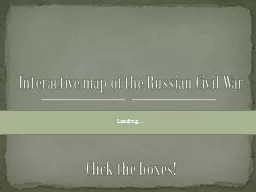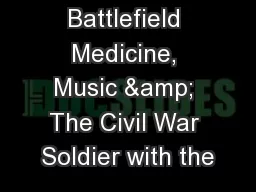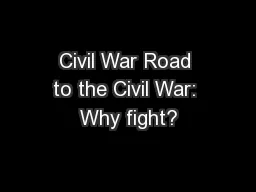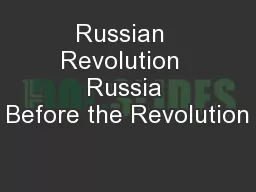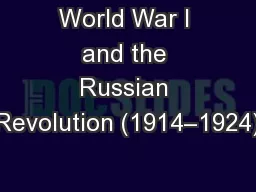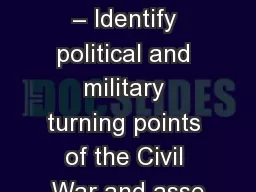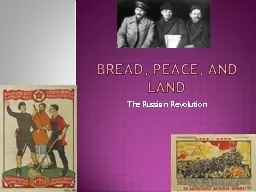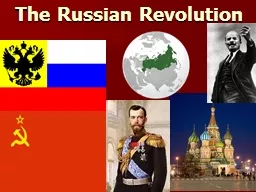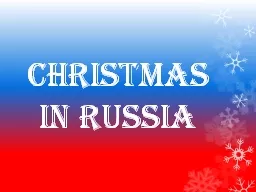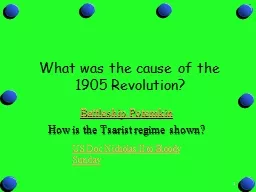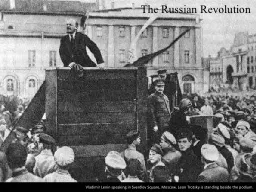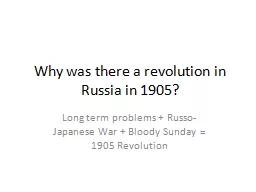PPT-Chapter 14, Section 5: Revolution and Civil War in Russia
Author : lois-ondreau | Published Date : 2019-12-08
Chapter 14 Section 5 Revolution and Civil War in Russia Section Summary At the beginning of the 1900s Russia had many political economic and social problems Tsar
Presentation Embed Code
Download Presentation
Download Presentation The PPT/PDF document "Chapter 14, Section 5: Revolution and ..." is the property of its rightful owner. Permission is granted to download and print the materials on this website for personal, non-commercial use only, and to display it on your personal computer provided you do not modify the materials and that you retain all copyright notices contained in the materials. By downloading content from our website, you accept the terms of this agreement.
Chapter 14, Section 5: Revolution and Civil War in Russia: Transcript
Download Rules Of Document
"Chapter 14, Section 5: Revolution and Civil War in Russia"The content belongs to its owner. You may download and print it for personal use, without modification, and keep all copyright notices. By downloading, you agree to these terms.
Related Documents


